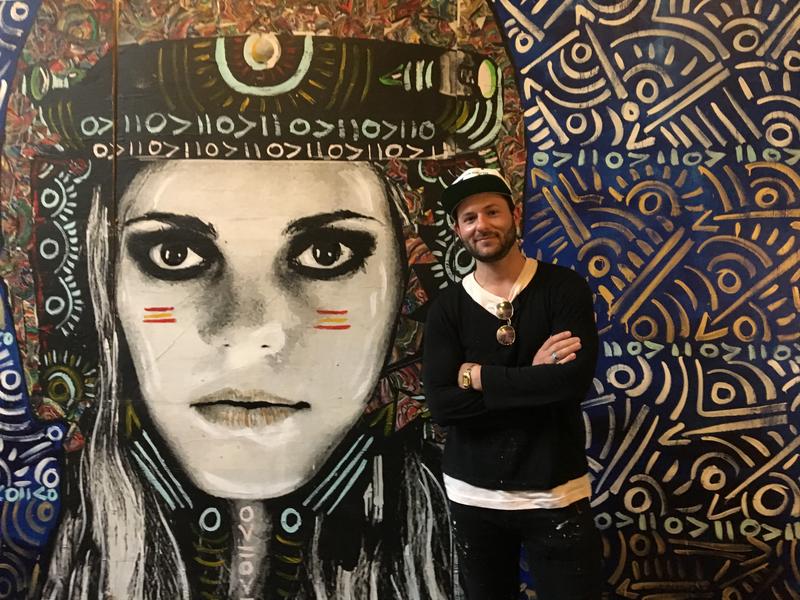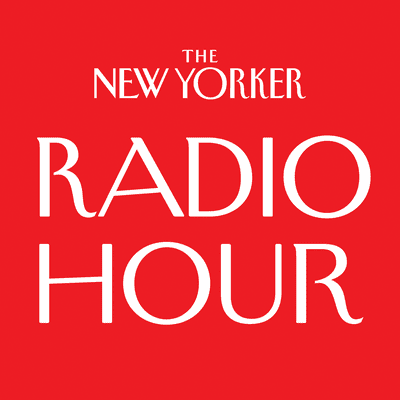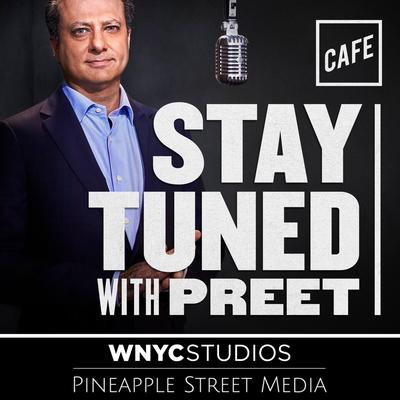Change the Name of the Arts District to the Luxury District

( Avishay Artsy )
[audio playback]
Participant 1: The owners of the galleries don't want to analyze the impact they're having in the neighborhood where they are locating. We've been told, "Oh, we're bringing art to your community." That's very insulting to imply we never had art here in Boyle Heights before. Of course, we have.
Participant 2: I'm not going anywhere. I've been here in Downtown LA for the last 25 years. I'm not going to go away because somebody tells me to just go. I'm home.
Participant 3: I just wish that there was a way where we could have a conversation between what they would like to accomplish and the resources that we have available to us as gallery owners. They were very clear on the fact that we just need to leave.
Participant 4: Basically, a lot of people feel that they're being outcast because you have all these millionaires coming in, and they wanted more like a swab or Rodale drive thing. It baffles me, to be honest with you, that that's going on.
[end of audio playback]
[music]
Saul Gonzalez: In LAs Mexican-American Boyle Heights neighborhood, you hear mariachis at weddings, family reunions, and quinceañeras. But this is the first time I've heard them perform to celebrate the demise of something. After months of protests, anti-gentrification activists have forced a small nonprofit art space started by people who don't live in Boyle Heights to close.
[audio playback]
Participant 5: Hay que sacar a todas las galerías de aquí porque están subiendo mucho la renta, ya la gente no tiene--
[end of audio playback]
Saul Gonzalez: Over the last couple of years, a dozen or so art galleries have opened to Boyle Heights, and the activists hate them. They say the galleries are the advanced guard of gentrification. If the art spaces thrive, other things will follow.
Leonardo Vilchis: You put a gallery with paintings that cost tens of thousands of dollars, and the audience that comes to this place started looking for other kinds of amenities, right?
Saul Gonzalez: That's Leonardo Vilchis with the neighborhood group Union de Vecinos.
Leonardo Vilchis: They look for the brewery, for the coffee shop, for the place to hang out. All of those things increase the cost and the value of the local neighborhood and in turn change, how much it costs to live around here?
Saul Gonzalez: His message to gallery owners, "Whether you know it or not, you're a kind of cancer in Boyle Heights".
Leonardo Vilchis: What you need to do with cancer is, you not to do surgery in it. You need to start killing the cells that are treating the cancer. To say, "I'm a cancer cell, but I want to be good." Doesn't change the fact that you're a cancer cell. You need to move out.
[music]
Saul Gonzalez: I'm Saul Gonzalez and this is There Goes the Neighborhood LA. In their fight to kick the galleries out of Boyle Heights. The anti-gentrifiers have held marches, gallery doors have been tagged with the words F white art, and posters plastered around the neighborhood had even depicted a human skull and the target and the words, "Boyle Heights is not safe for hipster trash." Vilchis makes no apologies for the tactics. He says, "Boyle Heights has too often been treated like a doormat by outsiders".
[audio playback]
Leonardo Vilchis: We have a history in this neighborhood of saying, "yes, but", to the developers, "Yes, but", to the politicians. When we started saying no is when they started listening.
[end of audio playback]
Saul Gonzalez: Opponents of the Boyle Heights gallery say they aren't anti-art. After all the neighborhood and the rest of East LA have a long creative history from street murals to the music of Los Lobos. The protestors say in a neighborhood where more than a third of residents live below the poverty line, there are more pressing needs than galleries.
[audio playback]
Leonardo Vilchis: A laundromat, a homeless shelter, affordable housing for people who make less than $20,000 a year, maybe get some parts and some gardens, maybe a smaller school for children, but not the stuff that we're having right now. The ideal is a process of development that is driven and accountable to the local residents.
[end of audio playback]
Saul Gonzalez: The conflict over the galleries in Boyle Heights highlights the complicated role artists and other creative types play in gentrification. Do they cause it? Are they victims of it? Or is it a bit of both? These questions are most intense right now in the neighborhood immediately to the West of Boyle Heights and across the LA River.
[audio playback]
Carolina Miranda: We're standing in the middle of the Arts District. It's an old light industrial area attached to Downtown Los Angeles.
[end of audio playback]
Saul Gonzalez: That's Carolina Miranda. She writes about arts and culture for the L.A. Times. In the 1970s, this street where we are and those around it, were your classic post-industrial landscape. They're like factories, empty warehouses, and buildings caked in soot and grime, and all that made it perfect for the arts crew.
[audio playback]
Carolina Miranda: It was lots of real estate for cheap and artists could rent an entire floor of a warehouse. Maybe 10,000 square feet, subdivide it, share it with other artists. They could all have studio space because I think that's part of the quest. It's always the studio space, "I need a place where I can live and I need a place where I can make work".
[end of audio playback]
[music]
Saul Gonzalez: By the 1980s, a thriving, if under the radar, our community was well-established here. The artists turned empty factories into some of LAs original live workspaces. They staged exhibitions and art happenings on warehouse loading docks. They partied in clubs like Al's Bar and The Atomic Cafe, both cradles of LA punk scene. It's around this time when painter Lisa Adams moved into the Arts District, although it didn't formally get the name from the city until years later.
[audio playback]
Lisa Adams: I had a sixteen hundred square foot space. I had it by myself because I could. It was $625 a month, including all utilities. I actually portioned a part of it off that I rented for 200 a month. Basically, I had a four hundred and twenty-five dollar a month rent.
[end of audio playback]
Saul Gonzalez: There were drawbacks, a single bathroom down the hall for five tenants, no heat and air conditioning, and living there was illegal because the building wasn't up to residential fire and safety codes, but the artists had no problems with any of that.
[audio playback]
Lisa Adams: No one had any judgements about, "Gosh, why are we living here? This is such a dump. The landlord is awful." When I say awful, he actually wasn't awful. He just left us alone. If the plumbing broke, we had to fix the plumbing. He never raised the man and he never hassled us about anything.
Saul Gonzalez: It was comfortable neglect.
Lisa Adams: Yes, comfortable neglect. That's a really good way of putting it. We didn't mind, we were cool with it. We were okay.
[end of audio playback]
Saul Gonzalez: About 10 years back though, the Arts District began really changing. City hall revised zoning codes to encourage investment in the neighborhood. Developers began buying up properties. Trendy businesses opened, a coffee house here, a boutique clothing store there. In 2008, actor Nicolas Cage moved into the neighborhood. He rented a four thousand square foot loft apartment in a building that used to be the LA offices of Nabisco, the cookie makers. Urbanist Richard Florida studies gentrification in cities across the country. Here's how he describes what happened in LA Arts District.
[audio playback]
Richard Florida: When we talk about Downtown LA and these particular neighborhoods, I talked to one of the credit card companies. I never could get the data, but they had data which showed the pace of gentrification in many cities because they have transactions. They said what was happening in these neighborhoods of Los Angeles, defied anything they had seen before. In other words, when this happened in New York, it happened over such in many years, when this happened in San Francisco and in Los Angeles, it was like this on steroids.
[end of audio playback]
Saul Gonzalez: What about the artists in the Arts District while this was all happening? Like Lisa, they started hearing from their landlords that the days of dirt, cheap rent, and comfortable neglect were over.
[audio playback]
Lisa Adams: Then, he sold the building, and then we were all evicted. We had 30 days.
[end of audio playback]
Saul Gonzalez: Now the Arts District is some of the most prized real estate in Los Angeles. Old buildings are being remodeled and turned into upscale apartments and businesses. New construction is everywhere and rents are soaring. Carolina Miranda says the changes are mind-boggling from how she remembers Arts District in the nineties.
[audio playback]
Carolina Miranda: Sometimes I drive to the Arts District and Downtown in general, and I can't believe what I'm seeing. It's zero to 60 in terms of the changes that have happened here.
[end of audio playback]
Saul Gonzalez: As investors buy buildings and raise rents. A lot of the artists and the Arts District, "I've either been evicted" or, "Chosen to leave." Other artists are just trying to hang on and turning to increasingly desperate measures to keep their studios and their homes.
[audio playback]
Michael Parker: Art is inherently political and we are standing up and saying, "No, you can't push us around so that you can have 2000 more dollars a month to pay for your Bentley".
[end of audio playback]
Saul Gonzalez: That's artist Michael Parker. He's lived in a five thousand square foot studio space in the heart of the Arts District since 2001. Looking around, it's a shabby chic Wonderland with every nook and cranny of the place stuffed with canvases, sculptures, and art supplies. Michael says his landlord wants him gone so he can build a high rise, mega-development of upscale apartment and stores. To fight both his own eviction and the looming eviction of other artists, a couple of streets over, Michael's taking action. He and some of his neighbors are hanging banners outside his loft to protest the evictions.
[audio playback]
Michael Parker: Zip ties, we found him. Okay. We're going to start hanging the banner for the 800 traction support of their artists evictions. What's the exact language for the artists, eviction signs? Nancy, can you say what it says?
Nancy: "Stop Arts District eviction".
Michael Parker: We're about to hang that sign on the fence directly facing the [unintelligible 00:10:37] in support
[end of audio playback]
Saul Gonzalez: Immediately below Michael's loft, his landlord is staging a swanky fashion show, and Michael wants to make sure that the landlord and his guests see and hear the angry artists.
[audio playback]
Michael Parker: Tonight, 40 artists who have lived in the Arts District are coming together to say, we're not leaving. If you want to call this place the Arts District, then you need to make it so that we can stay in the Arts District, and if we can't stay in the Arts District, then you need to change the name from the Arts District, Mayor Garcetti, City Council José Huizar. You need to change the name of the Arts District to the Luxury District, to the Dushbag River District, or to the Silicon Lofts. Let's call it the Silicon Lofts. If you want to call it that, then fine. Give me some rent control. I want to stay. I want my friends to stay.
[end of audio playback]
Saul Gonzalez: Michael also worries about who he might hurt if he gets evicted, and is forced to look for another home.
[audio playback]
Michael Parker: If I get pushed out to the Arts District as an artist, a sixteen-year tenant in the Arts District, and I get pushed out to the Arts District with the name of the neighborhood named after me, then I'm going to go gentrify somebody else and push somebody else out. That doesn't make me feel good.
Saul Gonzalez: Is that the choice? [crosstalk]
Michael Parker: That's the choice.
Saul Gonzalez: You leave here, you go somewhere else and you bring gentrification.
Michael Parker: Yes. Then I bring gentrification. I'm in a catch 22.
[end of audio playback]
Saul Gonzalez: One neighborhood, Michael, has reluctantly considered moving to Boyle Heights. Up next, artists wrestle with their role as collaborators in gentrification. When does street art become advertising for luxury living?
[silence]
Saul Gonzalez: Even as they try to survive gentrification, a lot of artists are wondering if they helped create the conditions for these changes. Did their very presence here put the neighborhood on developer's radars?
[audio playback]
Lisa Adams: This is one of the larger spaces at the colony, and we share it. We share the bathroom and the kitchen together, and then, of course, this is my workspace [crosstalk]
[end of audio playback]
Saul Gonzalez: Artist Lisa Adams has thought long and hard about this connection between creatives and how a neighborhood changes and her conclusion actually isn't different from the anti-art gallery activist you heard in Boyle Heights.
[audio playback]
Lisa Adams: It always happens that the developers follow the artists. It's not uncommon. Artists are brave, they are on the front line and they're willing to put up with things that other populations won't. Because you go into an area, you do have to fix it up a little bit, and you do have to figure out ways to navigate it. If you can do it and you've made a little progress in that area, then it becomes very attractive to a developer because they see it can be done, except they can do it a lot better because they have a lot of money to pour into it.
Saul Gonzalez: You're like the canaries in the coal mine.
Lisa Adams: That's right. I mean, you are a 4Runner to what is to come, and it's almost guaranteed. Every single time I've seen it, that's what happens.
[end of audio playback]
Saul Gonzalez: Carolina Miranda says artists have a complicated relationship with gentrification and really more broadly with wealth and status.
[audio playback]
Carolina Miranda: A lot of artists tend to be educated, they tend to have advanced degrees, art galleries in order to sell often want to bring in more money patrons into a neighborhood. Once you have a neighborhood that's popular, those patrons maybe want a place to get some of their flat white and their whole-grain organic sandwich. It's definitely part of the cycle, whether it's the cause of the cycle I think is still being debated by a lot of urban myths.
Saul Gonzalez: I guess one advantage for the developers is that the presence of artists in a place takes care of some of your marketing. You don't have to convince people it's cool. It's organically cool because the artists are already there, living there, doing their thing, right?
Carolina Miranda: I think the artists certainly do part of making a place cool, but that place is also subject to a whole confluence of other factors. There could be a bunch of artists living in lofts in San Bernardino and nobody is following them to San Bernardino. What's happening with the arts district is you have this whole redevelopment of downtown happening and therefore you have the proximity to a place where there's already a lot of development going, and so then what do you have?
You have this light industrial real estate that makes really great lofts, that makes really great boutiques, that makes really great restaurants and, guess what? We can transform it and get more bang for our square foot. I think it requires that yes, the artists can make a place cool, but there are plenty of artists living in all corners of Los Angeles that are not cool.
[audio playback ends]
Saul Gonzalez: One person who was attracted to the Arts District cool is Tracy Gray. She moved here with her husband back in 2005 and works at a nearby green tech business incubator.
[audio playback]
Tracy Gray: We were at one of the pioneers of buying lofts in Arts District.
[audio playback ends]
Saul Gonzalez: Tracy loves the Arts District old Bohemian vibe, wedded to all the new amenities, but she worries the neighborhood's at a tipping point.
[audio playback]
Tracy Gray: Yes, where's that middle ground between gentrification and improving a neighborhood. I don't know if I have an answer to that. There's things coming in here I don't like, there's a big development that looks like it's going to be the Grove, which I do not like. I like when there's businesses here, but it's local businesses that can thrive, but when you start getting too popular, then you get these national brands and then the rents go up.
Saul Gonzalez: You're pining for the old days.
Tracy Gray: Somewhere between, just a little bit, because I'm fortunate that what I have here and I'm grateful of what I have here, but the brand is the Arts District. It's a little different, but it starts looking like Westwood or Pasadena, then where's the brand and why are people not coming here?
[audio playback ends]
Saul Gonzalez: That brand she's talking about, developers know how attractive that is to the well-heeled creative class types where the real want to be. It's the message in this promotional video for proposed residential development to the neighborhood.
[audio playback]
You are a rarity, never compromising working for me. You aren't 9:00 to 5:00, you're 24/7, constantly blurring the lines of live, work, and play. Discover yourself at the Arts District Center.
[audio playback ends]
Saul Gonzalez: It's not just sales videos. KCRW's Avishay Artsy has been looking into some of the other forms that the marketing of artists and the artists lifestyle take. Hi, Avishay.
Avishay Artsy: Hi Saul. You know those angel wings you see painted on walls around LA?
Saul Gonzalez: I do, I see them everywhere.
Avishay Artsy: Well, they're made by a woman named Colette Miller. Anyway, she started like lots of street artists, painting without permission, but now she's getting paid to put up those wings. The developer of the former Macy's Plaza shopping center, now called The Block, it's a mixed-use center, hired a bunch of local street artists to create murals, including the angel wings artist. Wordsmith, the guy who stencils a typewriter and we pay some message in a typewritten font on the building.
Saul Gonzalez: I thought that was just artists doing their own things.
Avishay Artsy: Sometimes it is, but in gentrifying neighborhoods, what looks like art can sometimes really be marketing. The developers are taking it even further, not only hiring artists for a day, some developers are now actually paying them to live in a building to give it something special.
Saul Gonzalez: Where's this happening?
Avishay Artsy: Well, for example, there's a property downtown called OLiVE DTLA. It's a nondescript gray concrete apartment building at Olive and Pico. It's in the South Park neighborhood, just West of the Arts District. The developers called The Wolff Company, they held a competition for an artist to win free rent for six months in exchange for making art in the building. Amber Huntley Ruiz is the marketing director and she says having an artist live in the building helps it stand out from all the other new high rise luxury apartments downtown.
[audio playback]
Amber Huntley Ruiz: At some point, all of them are beautiful and highly amenitized and they have great quartz countertops and great cabinets and all that jazz, but what is it that makes a building special? It's something that we can't physically build. It's authenticity and a personality that we have to work to give the building.
[audio playback ends]
Saul Gonzalez: Avishay, let's pause here. She's talking about working to give the building authenticity. Isn't that an oxymoron? Either it's authentic or it isn't right?
Avishay Artsy: Right. That's the central paradox here. Downtown Los Angeles has become so expensive that developers have to bring artists in to add that flavor, that authenticity that made the neighborhood what it was.
Saul Gonzalez: But that's not the same. Street artists getting hired to make a new building look cool is one thing, I get that. At OLiVE DTLA, they're putting the artists up for six months.
Avishay Artsy: Yes, they'll say it's not just the art that's the draw, but the experience of rubbing shoulders with an actual working artist. When you leave your apartment to get coffee or go use the pool, you might pass the artists spray painting away and stop to chat. I think that's the key part of it. I wondered what is that like for the winning artists?
[audio playback]
Kelcey Fisher: We're walking onto the second floor right now where my artist loft resides.
[audio playback ends]
Avishay Artsy: Kelcey Fisher is the artist who won all of DTLA's competition. He shows me the apartment he's got for free for six months. It's one big room, you walk into the kitchen, which opens up into the living room and there are stairs leading up to a bedroom loft. This apartment normally rents for $2,700 a month.
[audio playback]
Kelcey Fisher: Yes, this is what I've done with the place so far.
[audio playback]
Avishay Artsy: It looks pretty moved in.
Kelcey Fisher: Yes, I had a lot of help from friends and family.
[audio playback ends]
Avishay Artsy: Residents can actually see into Kelcey's space from the courtyard. When he has his blinds open, he's in the most visible apartment in the building. He's right there for the other tenants to interact with.
[audio playback]
Kelcey Fisher: People will walk by when I'm having my coffee, and I'll be like, "Hey? What's up?" [laughs]
[audio playback ends]
Avishay Artsy: He shows me around the building. We take the elevator up to the roof. There's a lounge area with grills, a dog park, and a great view of the downtown skyline.
[audio playback]
Kelcey Fisher: Here's where I've been coming up here every single night to watch that and get some work done. That's great.
[audio playback ends]
Avishay Artsy: Kelcey was one of over 180 artists competing for this residency.
Saul Gonzalez: What kind of art is he making?
Avishay Artsy: His stuff is really colorful, he creates these patterned backgrounds, sometimes using bits of broken mirror, often placed around a large black and white photo of an attractive female model. It's youthful, energetic, accessible. It's easy to see why he was picked.
Saul Gonzalez: What do you think about all of this? Is this good for Kelcey, for the company, and for the other people who live at this place?
Avishay Artsy: It's complicated. There are people in the art world who think this is great. There's a guy who worked on producing the competition at OLiVE DTLA named Justin Fredericks, who tells me developers paying the artists for their work is a good thing.
[audio playback]
Justin Fredericks: In the past, a lot of these huge murals, these beautiful murals that are almost landmarks in the city that go up, the artists were not compensated. Now with these new developments coming up, the developers are valuing the art and they're paying the artists for their work. Artists are not only getting more recognition through new developments because these buildings are their canvases for street artists, but now they're actually being compensated for it.
[audio playback ends]
Avishay Artsy: For Kelcey, this residency is a good deal. He gets lots of exposure, and he's using his stipend to fly in international artists he admires for collaborations to expand his connections. Scott Power who runs a branding and marketing agency in LA called Crewest Studio, says companies offering artists exposure is insulting.
Scott Power: There's no starving lawyers, there's starving doctors, there's starving developers. Why are there starving artists? This is an opportunity we think for business and brands to step into that void and really begin to work with artists in the same way that they've worked with celebrities and athletes over the years.
[audio playback ends]
Avishay Artsy: Power says if the developer was serious about supporting artists, they would at least give the artists a year, not just six months. When I asked Kelcey about this argument, he shrugs. He's been that starving artist, a graduate of Loyola Marymount University living in Venice Beach before it got expensive, and eating cheap ramen to survive.
[audio playback]
Kelcey Fisher: I went from going to LMU to living across the street, and two months late on an $800 rent, painting a closing sign for an auto body shop for 300 bucks to be able to go by a canvas to get another commission. [unintelligible 00:23:44] eating ramen noodles. That wasn't cool, but I did it. You got to struggle sometimes to get where you want to be, and like I said, getting this artist residence is one of those steps and the next level away from the painting auto body signs for 300 bucks.
[audio playback ends]
Avishay Artsy: Kelcey moved into OLiVE DTLA in August, he's been going to parties and art openings, immersing himself in the downtown art scene. The way he sees it, neighborhoods rise and fall, and if you want to stay in a rising area, you got to hustle.
[audio playback]
Kelcey Fisher: You got to build a name for yourself. It's like any profession, you got to work hard at it, and build your brand and get that. If you don't, then you're not going to be able to stay in that area and live that profession.
[audio playback ends]
Avishay Artsy: Saul, when I last met up with Kelsey, he pulled out his phone and turned the camera on selfie mode.
[audio playback]
Kelcey Fisher: I have Avishay over here.
Avishay Artsy: What's up dude? [laughs].
[audio playback ends]
Avishay Artsy: Before I know it, he's posted a video of me interviewing him to Instagram stories.
Saul Gonzalez: I love that. He's using us to build his brand.
Avishay Artsy: Yes, that business savvy attitude is paying off. Kelcey says he's getting calls from developers who want him to come paint their buildings too. He already has a few jobs lined up in LA and Brooklyn.
Saul Gonzalez: Avishay, do you get the sense that this is really an unusual idea of this artist in residence competition?
Avishay Artsy: Actually, no, this has been done before. I read about a musician in residence competition that a developer had for luxury apartment buildings in Chicago and in Nashville. They held a contest for the best acoustic guitarist and vocalist, and actually had the residents of each building vote on their favorite performer.
Saul Gonzalez: Wait, so like American Idol?
Avishay Artsy: Exactly. Then the winner lives there and performs at the building at least eight to 10 hours a week. Unlike OLiVE DTLA, the winners get to live in the building for a year, not just six months.
Saul Gonzalez: Artists have long served wealthy patrons and blurred the lines between what's art and what's commerce, right? That's an essential part of art history. Think of the Medici in Renaissance Florence, bankrolling people like Michelangelo, or Spain's kings in their in house royal artists like Velasquez. Or a way more contemporary example, Andy Warhol, who appeared in a bunch of marketing campaigns and commercials.
[audio playback]
Announcer: Talking to Andy Warhol and [unintelligible 00:26:09] Sonny Liston, always fly Braniff. They like our girls, they like our food, they like our style.
Andy Warhol: When you've got it, flaunt it.
[audio playback ends]
Avishay Artsy: You were asking earlier whether artists are the victims of gentrification or the perpetrators, clearly a bit of both, but at least in this case, they are also sometimes the beneficiaries.
[music]
Saul Gonzalez: Listeners, we really want to hear your opinions about the role artists and creative types play in neighborhood change, or anything else related to gentrification. Go to kcrw.com/theregoestheneighborhood. Last week, we explored the role of property flippers in raising housing costs. Here's what one listener told us.
Gordon Skein: My name is Gordon Skein. I think it's immoral, because it does mess up the market. I think it does mess up people's opportunities to buy houses. I think it does really. It really creates a situation where people just really can't put down roots. Let's just slap this together, and let's turn a huge profit, and then let's go off and do the next one. I just don't see what is good about that. I really don't. Doing all that, I think the city is falling apart as resolved.
Saul Gonzalez: Next time on There Goes the Neighborhood LA, whether it's a microbrewery, yoga studio, or a coffee house, small businesses are often targets of gentrification criticism, but should they be?
Participant 6: What about the Starbucks? What about the McDonald's? What about the big chain places? What do you say when those places come into your community? I think supporting a Mom-and-pop shop is better than supporting a Starbucks. We as a small business, we're just trying to make it. We live in the area, we want to better it and, yes, I think there's missing a point.
[music]
Saul Gonzalez: This episode was reported by Avishay Artsy. Our producer is Miguel Contreras. Celeste Wesson is our editor. Sonya Geis is our managing editor. Our recording engineers, Kat Yore, [unintelligible 00:28:13], and JC Swiatek. At WNYC studios, our producer is Paige Cowett. Our executive producers Karen Frillmann, and Cayce Means is our technical director. Our composer is Hannis Brown, with additional music by Terence Blanchard. I am Saul Gonzales. This series is supported by the Conrad N. Hilton Foundation. Thanks for listening.
Copyright © 2020 New York Public Radio. All rights reserved. Visit our website terms of use at www.wnyc.org for further information.
New York Public Radio transcripts are created on a rush deadline, often by contractors. This text may not be in its final form and may be updated or revised in the future. Accuracy and availability may vary. The authoritative record of New York Public Radio’s programming is the audio record.






